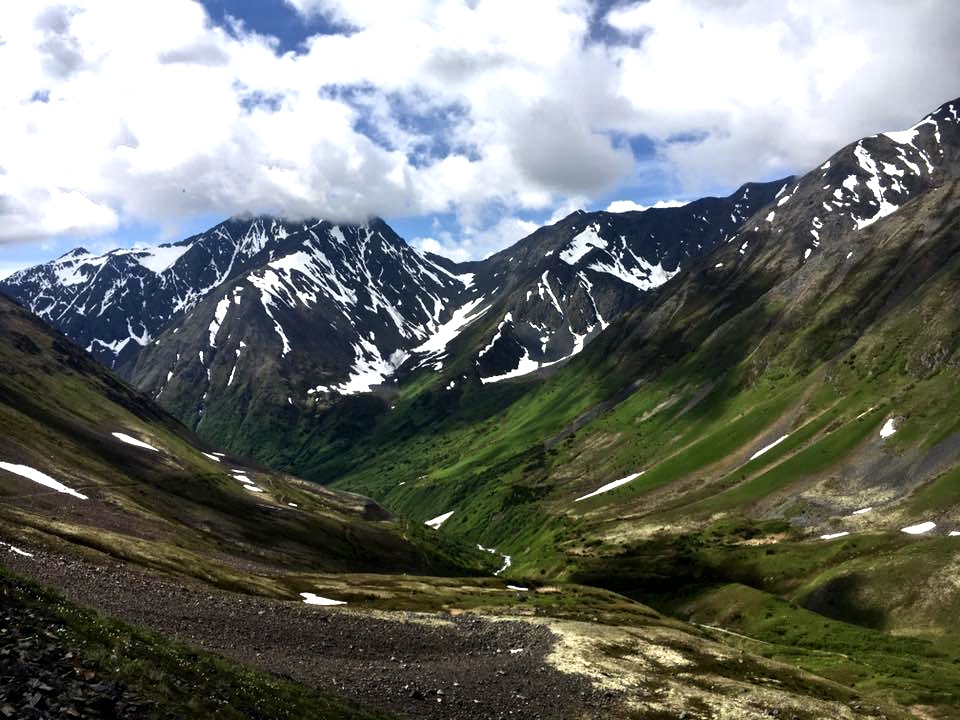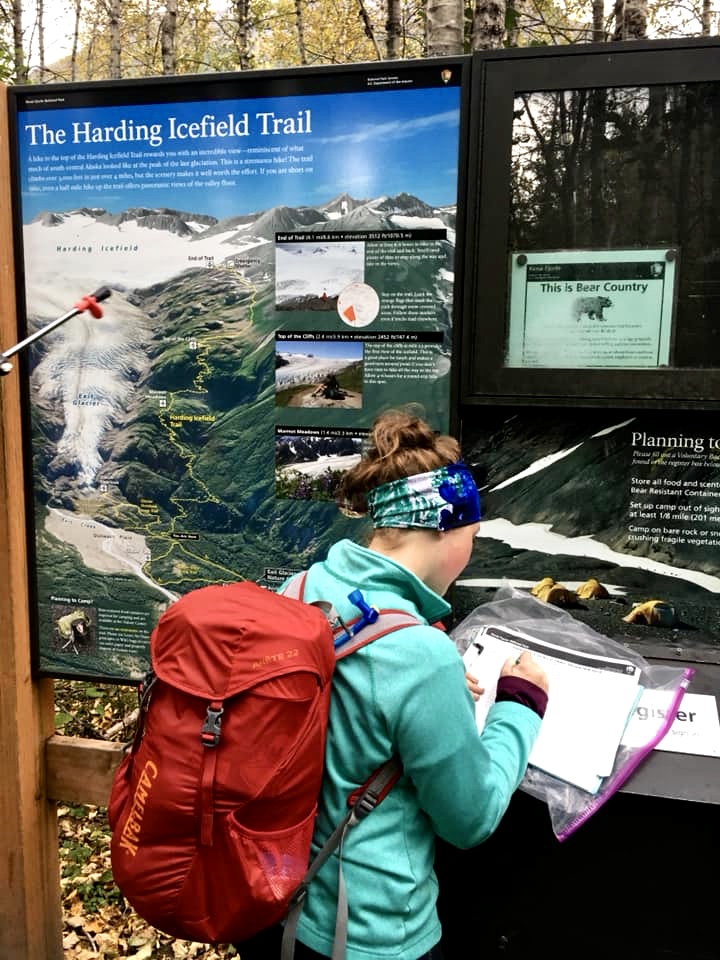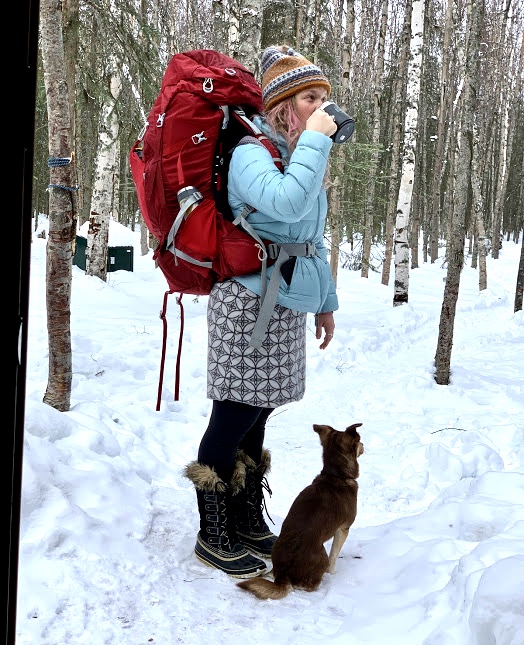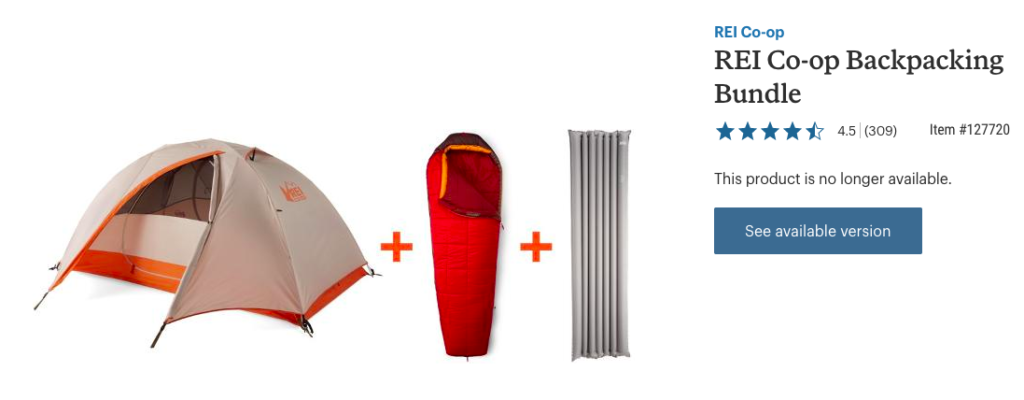Before I moved to Alaska six years ago, my hiking and backpacking experience was pretty limited. I loved being outside while growing up in Pennsylvania and I played sports all through school and into college, plus my family and I would camp every summer at Assategue State Park in Maryland. Active lover of the outdoors, yes. But hiking and backpacking? Not so much.

When I arrived in Anchorage after being hired as an elementary art teacher in the fall of 2014, I started hiking around town quite a bit. I was mostly exploring popular routes such as Flattop, Powerline Pass, and Arctic Valley, and I quickly became hooked!
Fast forward through three years of more hiking and continuing to explore Alaska. During the summer of 2017 I got invited to backpack Crow Pass with a group of friends! It was honestly pretty intimidating. I was the only person in the group who hadn’t backpacked before, and we had a lot of bear deaths in the weeks leading up to our trip.

Despite my initial hesitation, I decided to take a leap of faith and Crow Pass ended up being one of the highlights of my summer! Thankfully the only sign of bears was scat on the trail, and I came out of the experience not only with a new passion, but also a lot of additional opportunities when it comes to exploring this beautiful state!
I’m by no means an expert at this point, but here are a few suggestions if you’re interested in backpacking but not quite sure where to start!
Invest in good gear
There’s nothing worse than having the excitement of a new adventure ruined by blistered feet or a sore back. Before visiting me in Alaska, my friend broke in her new hiking shoes by wearing them around her house all day on the weekends. She didn’t want them super scuffed and muddy if she needed to return them (which she did with the first pair), but she also avoided sore feet and any consequential disruptions to our travels by testing them out!

When it comes to buying equipment, there are lots of “Gear Heads” out there who have written a million reviews if you want to do some research at home about what others have found works best for them. I’ve included a few of my own favorites at the end of this post.
I personally found my local REI was great in supporting me when it came to new gear. They have lots of articles online, and when I decided to invest in a new pack two summers ago an employee walked me through about a dozen options over an hour or two. From helping me understand what fit my body best to inquiring about the trails and price range I had in mind, their customer service was top notch.
Eat well
Just because you aren’t in the comfort of your own home doesn’t mean that you are restricted to living off of trail mix and Clif Bars! Food prep was probably the biggest thing that I struggled with when I first started backpacking. My suggestion is to think outside the box, get creative, stick to what you like, and don’t let your foodie self suffer!
At one point I went through a phase of bringing charcuterie picnics on my adventures. A friend of mine backpacked the grand canyon a few years ago, and she and her husband brought the ingredients to enjoy hot toddies by the fire at night. The point is for this to be enjoyable people! Plus, if you’re doing a lot of hiking you have more than earned a good meal- your body needs it!
If you’re not feeling that creative, thankfully companies like Mountain House and Backpacker’s Pantry have come a long way. A gluten-free friend of mine loves the Backpacker’s Pantry Pad Thai. They even throw in little packets of peanuts and sauce! Pro-tip: order an extra long spork from the shopping list below– they’re absolutely perfect for getting to the bottom of your meal without making a mess! And if you’re worried about pouch waste, there is a new recycling option available to keep your camp meals sustainable: https://www.mountainhouse.com/m/recycle-with-terracycle.html.
Be safe
After a long, dark winter everybody in Alaska is itching to get out and enjoy the sunny spell that we have been having! Unfortunately, that includes Alaska’s bears. Whether it’s something as serious as bear spray and bear cans or as simple as investing in some strong bug dope, no matter where you live there is always some level of risk to hiking and backpacking.

When it comes to safety precautions, a first aid kit is a great place to start, and you should always let someone know that you are headed out and about. Local condition reports like this one put out by the Alaska Division of Parks and Outdoor Recreation are also great ways to keep track of anything that should be on your radar: http://dnr.alaska.gov/parks/asp/curevnts.htm
Use your local resources
In addition to online resources, lots of times there are local groups, REI classes, or even friends that you can look to for help getting started when it comes to achieving your outdoor goals. I am lucky to have met people willing to teach me and help me become more comfortable backpacking, but if that’s not the case for you don’t be deterred!

A few years ago a friend of mine invited me on a group hike. It was organized by an all women’s group called Girls Who Hike, which exists around the country, and many of the hikers were new to Anchorage or seeking out a hiking community. While I’m not really big on group hikes, it was a fun experience and great to see individuals supporting one another in their hiking goals. I am part of a few different groups on Facebook that are amazingly helpful when it comes to finding nearby options to get outdoors.
Start small
If the idea of backpacking (or even hiking for that matter) is totally overwhelming to you, start small and work your way up. Find a supportive community (even if it’s online!), set some basic goals, and go from there. A 3-day backpacking excursion could come from committing to something as simple as a daily walk around your neighborhood. Sometimes it’s hard to be patient through the process, but it’s all about taking one step at a time.

That being said, day hikes are a great place to start if you feel like you are already in the shape for them. My Travel Staples list may be helpful if you are interested in day hiking and shorter excursions for now. Local public use cabins or yurts like the ones featured in my previous posts are also a good start if you don’t want to tent it.
My first backpacking trip to Crow Pass was a two-day overnight, 21 miles from start to finish. Friends of mine shared a 5-day backpacking itinerary of the Grand Canyon with me, and it is something that I really want to make a point of doing in the future! When it comes to travel, there is always another destination to work towards on the horizon.

Backpacking Basics Shopping List
Here is a starter list to help you gear up for future adventures if you are ready to make the jump to longer trips. Each item (except the first) is linked to Amazon for added ease of purchase- just click the image!


for your group based on how long the trip is and how many calories you will need.


**If you are interested in backpacking but on a budget or not wanting to invest in expensive gear just yet, check out local secondhand options! Anchorage has a great secondhand shop called The Hoarding Marmot (https://hoardingmarmot.com/) and REI also sells used gear (https://www.rei.com/used).


